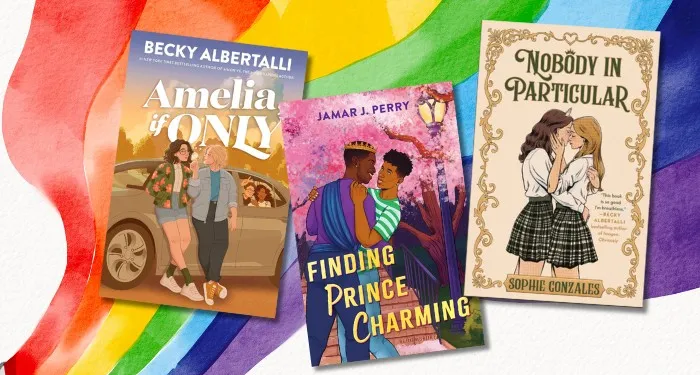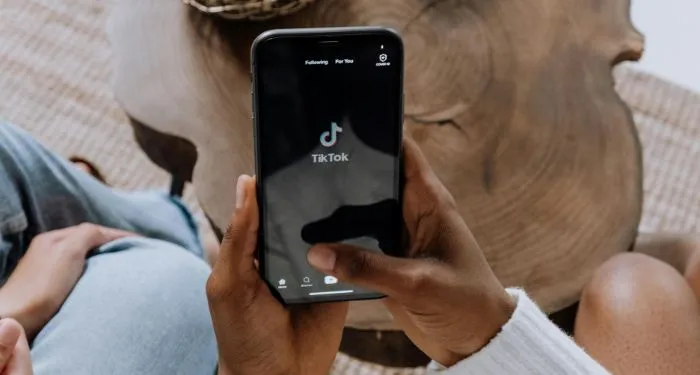For Authors
Trying to entice readers to buy more of your books through their mobile devices has been unnecessarily cumbersome for a long time, but we’re finally seeing a ray of hope. The battle between Epic Games and Apple has shaken the digital landscape, and the most recent ruling may have cracked open the paywall dead-ends and begun to loosen Apple’s grip on in-app purchases. It is already leading to meaningful changes that create a clearer path to smoother eBook sales and better returns for authors.
As Ginger explains in this week’s blog, this is not just another tech industry headline. It is a glimmer of hope for authors struggling to simplify the buying process for readers, and Amazon has already pushed through an update to the iOS Kindle app to reflect these changes. Read on to understand what the court decisions mean, what has changed, and how these shifts might help you sell more books while keeping more of your profits.
I’ve got an update on something that’s been getting my blood boiling over the last couple of years, and gives me a sliver of hope. I’m talking about the recent federal ruling in the Epic Games v. Apple lawsuit.
If you’re as frustrated as I am that readers can’t buy your books directly through the Kindle or Amazon app on their iPhone or Android phone, this court decision might just be the crack in Big Tech’s armor we’ve been waiting for. Apple’s been forced to loosen its chokehold on the iOS App Store, and while it’s not a full-on revolution, it’s a step toward making life easier for us small-time publishers who are tired of getting squeezed by Apple’s and Google’s exorbitant transaction fees. Let’s break down what this means for you, your readers, and your bottom line.
If you’re selling eBooks on Amazon, you already know the pain. For years, Amazon’s Kindle app on iOS and Android hasn’t let readers buy books directly in the app. Why? Because Apple and Google demand a 30% cut of every in-app purchase.
Let that sink in: You price your eBook at $2.99, and Apple or Google wants almost a dollar of it. For self-published authors like us, who are already scraping by on tight margins, that’s not just unfair, it’s a gut punch. Amazon, caught between a rock and a hard place, decided to remove the “Buy Now” button entirely from their apps rather than hand over that kind of cash. First, they did it on iOS a few years back, and then, in June 2024, they pulled the same move on Android.
This is a disaster for us. My data shows that 68% of my reach comes from mobile devices—readers scrolling on their phones, clicking my ads on Instagram or Facebook, ready to buy. But back before I shifted to direct sales, when they tapped a link, they were funneled into the Kindle app, where there’s no “Buy Now” button.
If you’re using ads to drive customers to your product pages on Amazon, potential readers have to jump through a bunch of different hoops to actually complete a purchase. They need to open a browser, navigate to Amazon.com, log in (often with a two-factor authentication code), and then maybe, just maybe, complete the purchase.
As anybody with a background in ecommerce knows, every extra click is a reader lost. I’ve seen estimates that each additional step in the buying process cuts your conversion rate by 50%. If you’re spending money to promote your books, you only need to do the math to see that the current setup results in a lot of potential sales vanishing into thin air, and it’s killing the ROI on your ad campaigns.
But that was before the judgement in the Epic v. Apple case.
If you’re not familiar with that case, let me fill you in. The most important thing to know is that Epic is the company which publishes and runs the massively successful video game Fortnite.
I have absolutely no shame in admitting that I love Fortnite. My three kids and I will often team up to drop into Battle Royale and maybe even pull off a rare Victory Royale (we’ve done it a bunch of times. Dad’s no slouch with an SMG.)
But every time my kids spotted a shiny new emote or skin in the Item Shop (the most recent one was Hatsune Miku, the anime character my daughter is obsessed with) we’d find that buying that item was a pain, thanks to companies like Apple having an iron grip on the App Store and refusing to let us complete the transaction on a mobile device.
Back in August 2020, Epic Games, the folks behind Fortnite, decided they’d had enough of Apple’s nonsense. Apple takes a 30% cut of every in-app purchase on iOS, which means if my kids want 1,000 V-Bucks for $9.99, Apple’s pocketing $3 of that. That’s insane! Epic thought so too, so they pulled a bold move: they pushed a hotfix update to Fortnite on iOS and Android that let players buy V-Bucks directly from Epic at a 20% discount—$7.99 instead of $9.99—bypassing Apple’s payment system entirely. Epic was like, “Why should we let Apple gouge us and our players?” I feel that in my soul every time I see those V-Buck prices pop up.
Apple didn’t take kindly to this. Within hours, they yanked Fortnite from the App Store, citing a violation of their terms of service. Google followed suit, pulling Fortnite from the Play Store for the same reason. Epic came ready for a fight, filing lawsuits against both Apple and Google that same day, accusing them of anticompetitive behavior. The V-Bucks stunt wasn’t just about saving players a few bucks, it was Epic’s way of challenging Big Tech’s stranglehold on app stores. As someone who’s seen Amazon take a chunk of my eBook royalties, I get why Epic was fed up. These 30% fees aren’t just annoying; they’re a direct hit to our livelihoods.
In 2021, Judge Yvonne Gonzalez Rogers ruled on the case, and it was a mixed bag. She said Apple wasn’t a monopoly (boo), but she also ruled that Apple’s “anti-steering” rules—banning developers from telling users about cheaper payment options outside the app—violated California’s competition laws.
Fast forward to May 2025, and things got spicy. Judge Rogers dropped the hammer, saying Apple willfully violated her 2021 injunction. Apple had been dragging its feet, slapping a 27% fee on external purchases and throwing up “scare screens” to warn users about leaving the app. Rogers wasn’t having it, calling Apple’s compliance a “sham” and accusing their execs of lying under oath. She banned Apple from charging commissions on off-app purchases and from blocking developers’ ability to communicate with users.
Reluctantly, Apple updated their App Review Guidelines to allow apps on the U.S. storefront to include buttons, links, or calls to action that send users to external websites for purchases—no special permissions needed—and Amazon didn’t waste any time taking advantage.
They rolled out an update to the Kindle iOS app with a new “Get Book” button. Now, when readers search for your book in the app, they can tap that button, and boom, they’re whisked to Amazon.com in their browser to buy it. It’s not as slick as in-app purchasing, but it’s a massive improvement over the old rigmarole. Suddenly, the buying process is less like navigating a maze and more like a quick detour. Android users, hang tight, while Amazon hasn’t updated the Android app yet, I’d bet my next royalty check they’re working on it.
So, how does this change the game for us? First, let’s talk about the immediate impact. That “Get Book” button makes it MUCH easier for readers to buy your books, especially the 68% (or more) who are on mobile.
Instead of abandoning the purchase when they hit the dead end of the Kindle app, they’ve now got a clear path to your book on Amazon’s website. If you’re still advertising your books on Amazon, this should boost your conversion rates, meaning more eBook sales from the same ad spend.
But let’s not pop the champagne just yet. This isn’t a full fix. Readers still have to leave the app and log in on the browser, which can involve those pesky authentication codes. And Apple’s still appealing the ruling, which means they could win and slam the door shut again. If that happens, we’re back to square one, and trust me, I’m not switching back from direct sales any time soon, just in case that happens.
But the bigger picture is where things get interesting. This ruling sets a precedent. It’s a signal that Big Tech’s iron grip on app stores might be loosening. If Apple and Google can’t keep bullying developers into using their in-app payment systems, we might see more apps—maybe even Amazon’s—offer direct purchasing options that bypass the 30% fee.
Imagine a world in which readers could click on your ads and then easily and seamlessly buy your books! The way it used to be! That’s not just a pipe dream. It’s a real possibility if this legal domino effect continues.
While we wait for the dust to settle, here’s how you can adapt to this new reality.
If you haven’t shifted to direct sales yet, it’s time to revisit your Facebook advertising and see if you can leverage this change to start making more of a profit.
One option is to target iPhone users specifically. They make up the majority of mobile devices in the United States, and now that a redirect system exists, it means iPhone users actually have an opportunity to buy your books directly.
Secondly, you should continue to lean into Kindle Unlimited. I know people go on about going “wide for the win,” but when it comes to advertising your books on Amazon, KU has some significant advantages. KU readers can still borrow your books through the app, which keeps revenue flowing even if you’re not making actual eBook sales. It’s not ideal, but it’s a lifeline.
Thirdly, educate your readers. Use your newsletter or social media to explain how to buy your books on Amazon’s website. Show your potential readers how to use the “Get Book” button in the Kindle app, or save their login on Amazon’s browser, to help them make faster purchases. It’s a pain to have to explain a sales process that theoretically should be seamless, but a little bit of education can keep your eBook sales from tanking and build a stronger connection with your readers.
Finally, and most importantly, track everything! Use Attribution Tags to monitor how your ad clicks are performing and whether or not this ruling is impacting your bottom line. Data is your best friend right now. It’ll tell you what’s working and what’s not, and give you the confidence to increase your marketing budget if the shift has worked in your favor.
This ruling is a kick in the teeth to Apple’s monopoly, but it’s not the end of the fight. Apple’s appealing the decision, and Google’s still charging their own hefty fees on Android devices.
But I’m cautiously optimistic. Amazon, Apple, and Google are ultimately all in the business of making money, and they can’t do that if readers can’t buy our books! This ruling puts pressure on the Big Tech giants to find a solution—maybe a lower fee structure or a way to let Amazon handle payments without the 30% cut.
For now, we self-published authors need to keep grinding. Write your next book, tweak your ads, and stay vocal about how these policies hurt small creators like us. The “Get Book” button is a small victory, but it’s proof that change is possible. Let’s keep pushing, keep writing, and keep fighting for a world in which our readers can buy our books without Big Tech taking a third of our lunch money!
You never know, this could be the fork in the road that might even inspire me to go back to pushing my books on Amazon instead of trying to sell them directly.
Do you agree? What’s your advertising strategy been up until now? And do you think this will make you change your marketing and publishing strategies? Let me know in the comment section below.
Share this blog
About the Author

Ginger is also known as Roland Hulme - a digital Don Draper with a Hemingway complex. Under a penname, he's sold 65,000+ copies of his romance novels, and reached more than 320,000 readers through Kindle Unlimited - using his background in marketing, advertising, and social media to reach an ever-expanding audience.

















 English (US) ·
English (US) ·